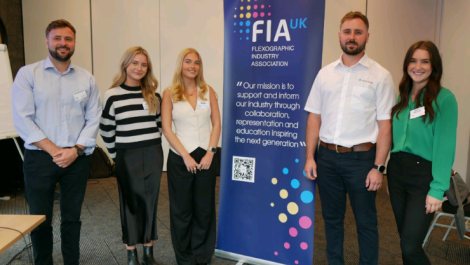Edas Pack is a major supplier of wraparound labels
For retailers selling in the Russian market, the print quality of their labels must be top class, perhaps even more so than the product itself. This means that printers continually need to invest in high class technology to attract and retain global brand owner customers. One such is Edas Pak, which invited Neel Madsen to visit its new modern facility in Moscow.
Acity of contrasts where the latest BMW models jostle for space with Soviet era trams in the city’s renowned traffic jams, where traditional Russian restaurants stand side by side with McDonald’s and Starbucks, Moscow is home to Edas Pak, a large packaging printer founded in 1996. Originally established as a co-operative with five owners, the company is today privately owned and specialises in wraparound drinks labels for many global brands, including PepsiCo, Coca-Cola, P&G and Nestlé, as well as a variety of national customers.
Excellent results
Situated on the south-eastern outskirts of Moscow, this Russian medium- sized packaging printer has been going through a major period of transition in the last few years, investing significant sums in building and equipping a new printing facilitylocated on its expansive plot which covers some 10,000 square metres. The new part, which also includes a suite of offices, has been well kitted out. In the vast main hall stand two Primaflex CM 10 colour presses from Windmöller & Hölscher. These are both fitted with the EasyReg option and AVT PrintVision Jupiter web inspection systems for added quality control. Edas Pak first started to attract major brand owner customers when it was the second company in the world to invest in a Soloflex press from Windmöller & Hölscher back in the late 1990s. It has since then had five of that press model, four of which are still running.
For platemaking, the company has invested in Kodak Flexcel NX technology and now has both the mid-sized system and the new wider one. Yuriy Shtraus, deputy general director for technology, said, ‘Our customers demand gravure-like quality but at the cost of flexo. They want to print in only four colours but show us seven colour jobs. The print results we can achieve with the Flexcel NX systems mean that we can offer the optimal solutions to our customers.’ Sergey Teplyshov, head of the pre-press department, agreed, ‘The Flexcel system gives us the opportunity to reduce the number of colours and produce excellent results for our customers. The big advantage is its simplicity and also the fact that we know we will get stable, repeatable print results.’
 Two Primaflex presses from Windmoller & Holscher dominate the new print production facility at Edas Pak
Two Primaflex presses from Windmoller & Holscher dominate the new print production facility at Edas Pak
Another first
The installation of the Flexcel NX Wide system was the first in Russia and Eastern Europe. It is typical of Edas Pak’s commitment to stay at the forefront of development and invest in innovative technology to retain its big clients and offer them the quality they demand. The inhouse pre-press department offers a full design service to clients and boasts eight Mac stations.
Plates are mounted on machines from JM Heaford and SysTec, and cylinders are stored securely on a bespoke rack in a separate room in the new plant. A number of slitter rewinders from Kampf and Euromac stand ready to finish the huge rolls of wraparound Nestlé and Schweppes labels and ice cream packaging that were being produced on the day I visited. Many of the manual processes are being eliminated from the production cycle. For instance, all inks are now dispensed automatically using a sophisticated dispensing system from Füll Systembau GmbH, complemented by an in-house ink mixing laboratory.
A huge warehouse is filled with stock of filmic substrates, both locally produced and imported, ready to go on press. Managing director, Sergei Doychenko, explained that the big brand owners demand that substrate, most often imported, is ready at a moment’s notice for quick turnaround. The wraparound label sector is very seasonally dependent with production at its peak during the summer months, and Mr Doychenko said that the company is looking to balance output more evenly throughout the year by attracting new customers from different markets. The transition from the older building to the new is nearing completion, an impressive project that puts the company in a very strong position for the future.
Mr Doychenko explained that all equipment will soon be under one roof and logistics rearranged to optimise production. Currently, the company employs 230 staff but is looking to attract more highly qualified people as it moves into the next phase of expansion and tackles new markets with a determination that is clear for all to see.






